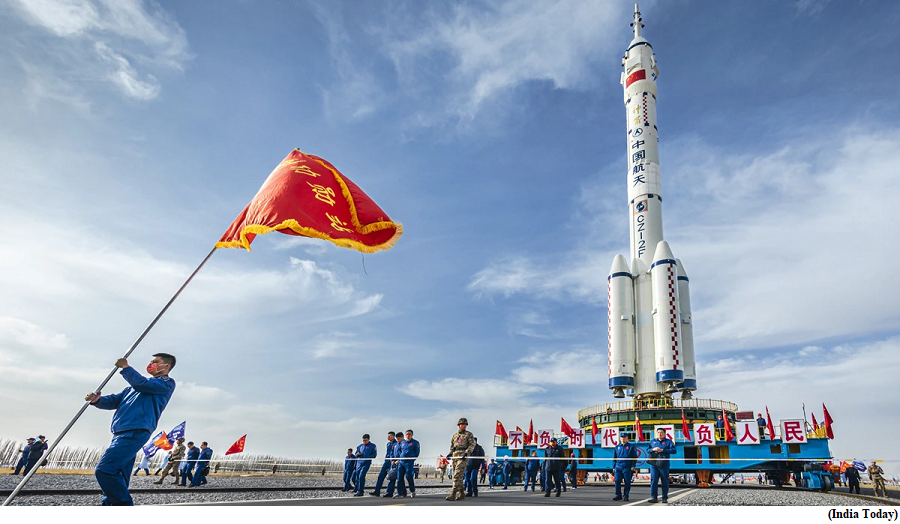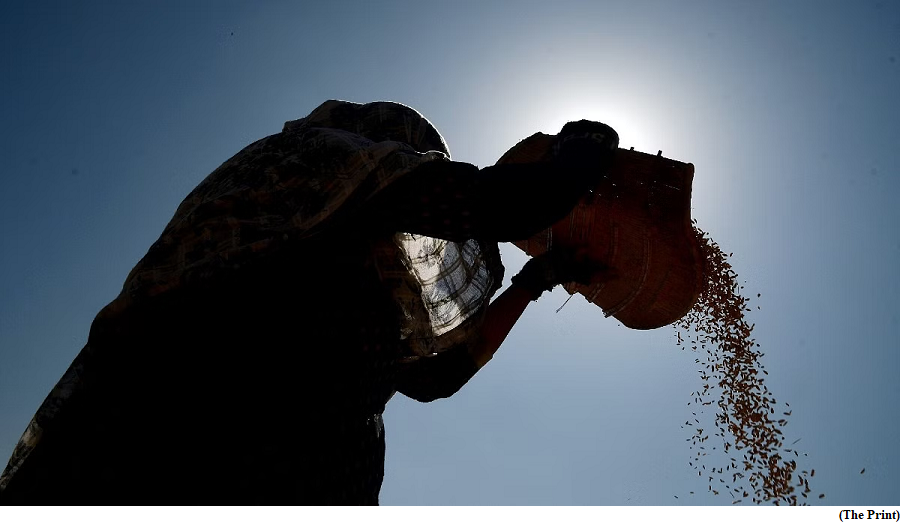China sent seeds, plants, fungi into space to mutate their genes (GS Paper 3, Science and Technology)

Why in news?
- The China Manned Space Agency (CMSA), which operates the newly built Tiangon space station, has announced a list of space seed projects to be carried aboard the Shenzhou-16 manned spaceship.
Space breeding:
- The initiative involves 136 types of space breeding experimental materials from 53 institutions, including a variety of crops, forest plants, grasses, flowers, medicinal plants, and microorganisms.
- Space breeding is a process that exposes seeds and strains to cosmic radiation and microgravity during a spaceflight mission, causing genetic mutations.
- This innovative approach aims to develop new crop varieties capable of withstanding extreme growing conditions.
- In the low-gravity environments beyond Earth's protective magnetic shield, seeds undergo subtle DNA changes, making them more resistant to drought and certain diseases.
- China has been at the forefront of space breeding since its first experiment in 1987.
- Over the years, the country has sent seeds of hundreds of plant species into space on numerous retrievable satellites and Shenzhou spaceships.
Shenzhou-16 spacecraft:
- The Shenzhou-16 spacecraft, launched on May 30, 2023, carried three astronauts who will stay aboard the station for approximately five months.
- During their stay, they will conduct scientific experiments and regular maintenance, contributing to China's ambitious space exploration program.
- This mission comes amid a growing rivalry between China and the US in the field of space exploration. While the competition has been largely friendly, it also reflects the sharpening contest for leadership and influence in technology, military, and diplomatic fields.
Background:
- China's decision to build its own space station was prompted by its exclusion from the International Space Station, primarily due to US concerns over the Chinese space programs' close ties with the People’s Liberation Army, the military branch of the ruling Communist Party.
- China's first manned space mission in 2003 marked it as the third country after the former Soviet Union and the US to put a person into space using its own resources.
Way Forward:
- With the latest announcement of space seed projects, China continues to make strides in its space exploration endeavors.
India’s non-Basmati rice export ban could hit global markets hard
(GS Paper 3, Economy)
Why in news?
- India recently banned the export of non-Basmati white rice, a move that could deal a significant blow to the global rice market.
- India accounts for around 40 percent of global rice exports, and is among the most competitively priced sources of Asian rice.

Key Highlights:
- The Directorate General of Foreign Trade (DGFT) issued a notification shifting the export of non-Basmati white rice from the ‘free’ export category to the ‘prohibited’ category.
- However, the notification added that some export would be allowed with the Union government’s permission in order to meet the food security needs of other countries.
- The reason for the export ban, is likely the rise in the price of rice, an average of Rs 40.9 per kg as of 19 July, 11.3 percent higher than what it was a year ago.
India’s rice exports:
- India accounted for 39 percent of global rice exports in 2022, which climbed to 41 percent by June 2023, according to data released by the US Department of Agriculture, which maintains a monthly database of global agricultural exports.
- According to Indian data, maintained by the government’s Agricultural and Processed Food Products Export Development Authority (APEDA), India exported a total of 22.3 million metric tonnes (MT) of rice in the financial year 2022-23. Of this, 57 percent was non-Basmati rice, the category that has now been banned for export.
- Data from APEDA shows that the share of non-Basmati rice in India’s overall rice exports has been rising quite steadily, even as rice exports overall have also been growing.
Background:
- India had in September 2022 banned the export of broken rice and imposed a 20 percent tax on the export of various grains in a bid to reduce rising prices.
- In June 2023, the government passed an order halting the sale of rice to state governments under the Open Market Sale Scheme “in order to ensure that the inflationary trends are kept under control while ensuring adequate stock levels in the central pool”.
Way Forward:
- The ban on rice exports will likely play havoc with the market predictions made by various foreign governments.
- India is expected to remain the most competitively priced global rice exporter in 2023.
Gaganyaan Human spaceflight mission, ISRO successfully tests service module
(GS Paper 3, Science and Technology)
Why in news?
- The Indian Space Research Organisation (ISRO) has successfully tested the Gaganyaan Service Module Propulsion System (SMPS) at ISRO Propulsion Complex (IPRC) at Mahendragiri in Tamil Nadu.
- The test involved five liquid apogee motor (LAM) engines with a thrust of 440 N (Newton) and 16 reaction control system (RCS) thrusters with a thrust of 100 N.

Gaganyaan project:
- The Gaganyaan project envisages demonstration of human spaceflight capability by launching a crew of three members to an orbit of 400 km for a three-day mission and bringing them back safely to Earth, by landing in Indian sea waters.
- The Gaganyaan SMPS is designed, developed, and realised by Liquid Propulsion Systems Centre (LPSC) of ISRO.
SMPS:
- The Service Module (SM) of Gaganyaan is a regulated bi-propellant based propulsion system that caters to the requirements of the Orbital Module, performing orbit injection, circularisation, on-orbit control, de-boost manoeuvring and SM based abort (if any) during the ascent phase.
- The 440 N Thrust LAM engines provide the main propulsive force during the mission ascending phase, while the RCS thrusters ensure precise attitude correction.
- The hot test of the System Demonstration Model (SDM) emulated the fluid circuit of the Service Module Propulsion System, encompassing the propellant tank feed system, helium pressurisation system, flight-qualified thrusters, and control components.
Way Forward:
- With the successful completion of this hot test, the SMPS has advanced in demonstrating its integrated performance in the full configuration.
- Moving forward, ISRO has scheduled five additional tests to demonstrate both nominal and off-nominal mission scenarios, reinforcing the rigour of testing and the commitment to mission success.




